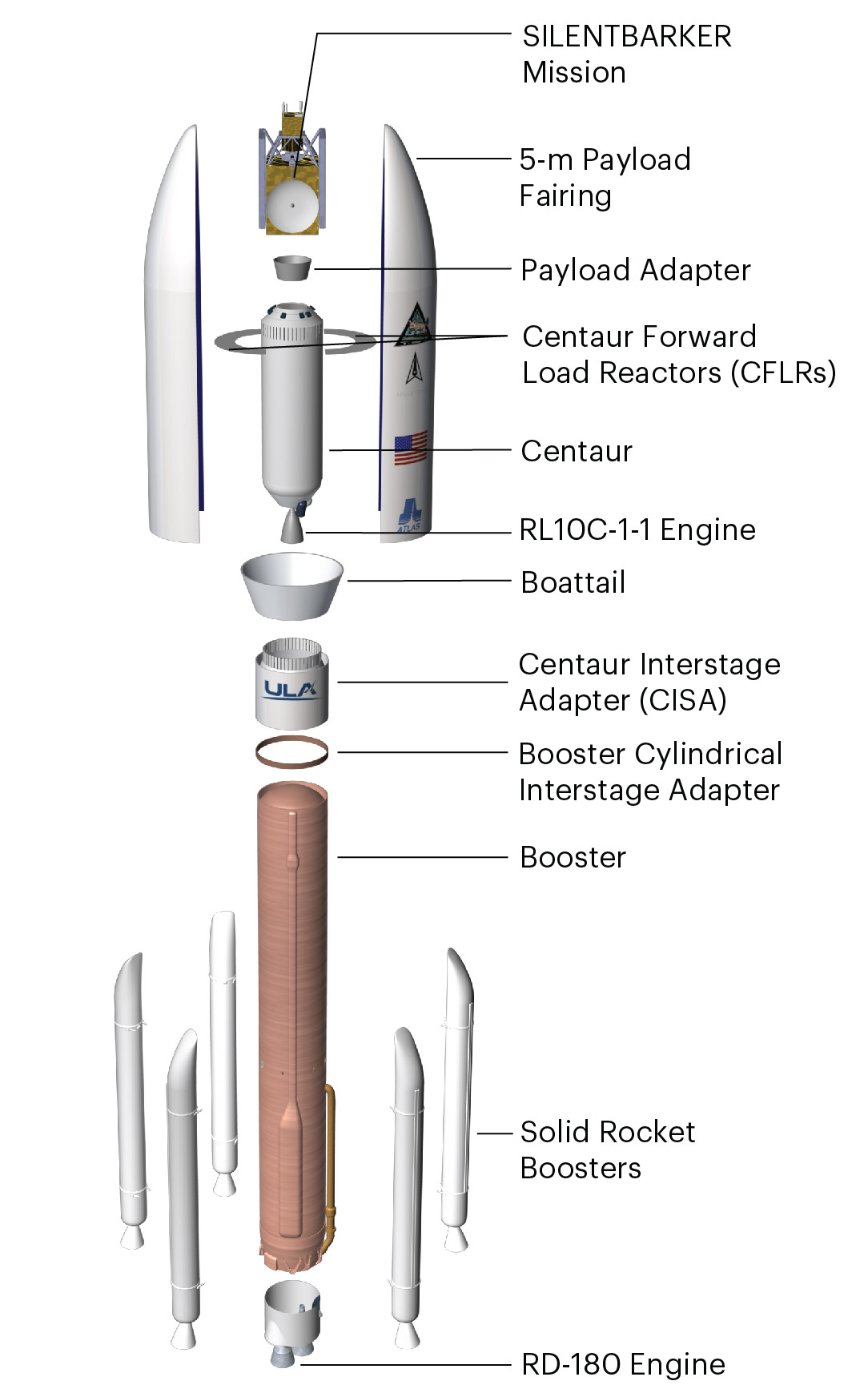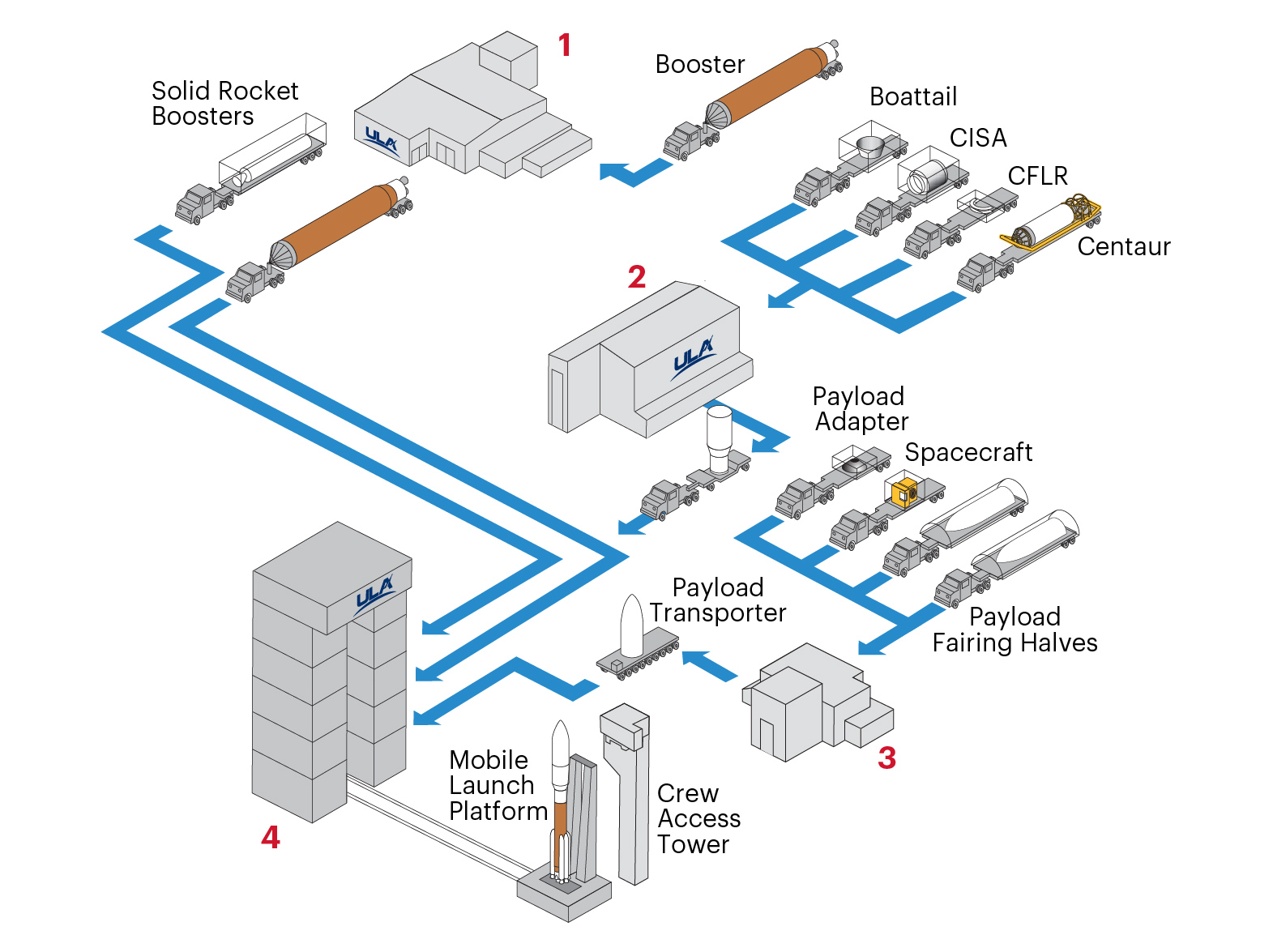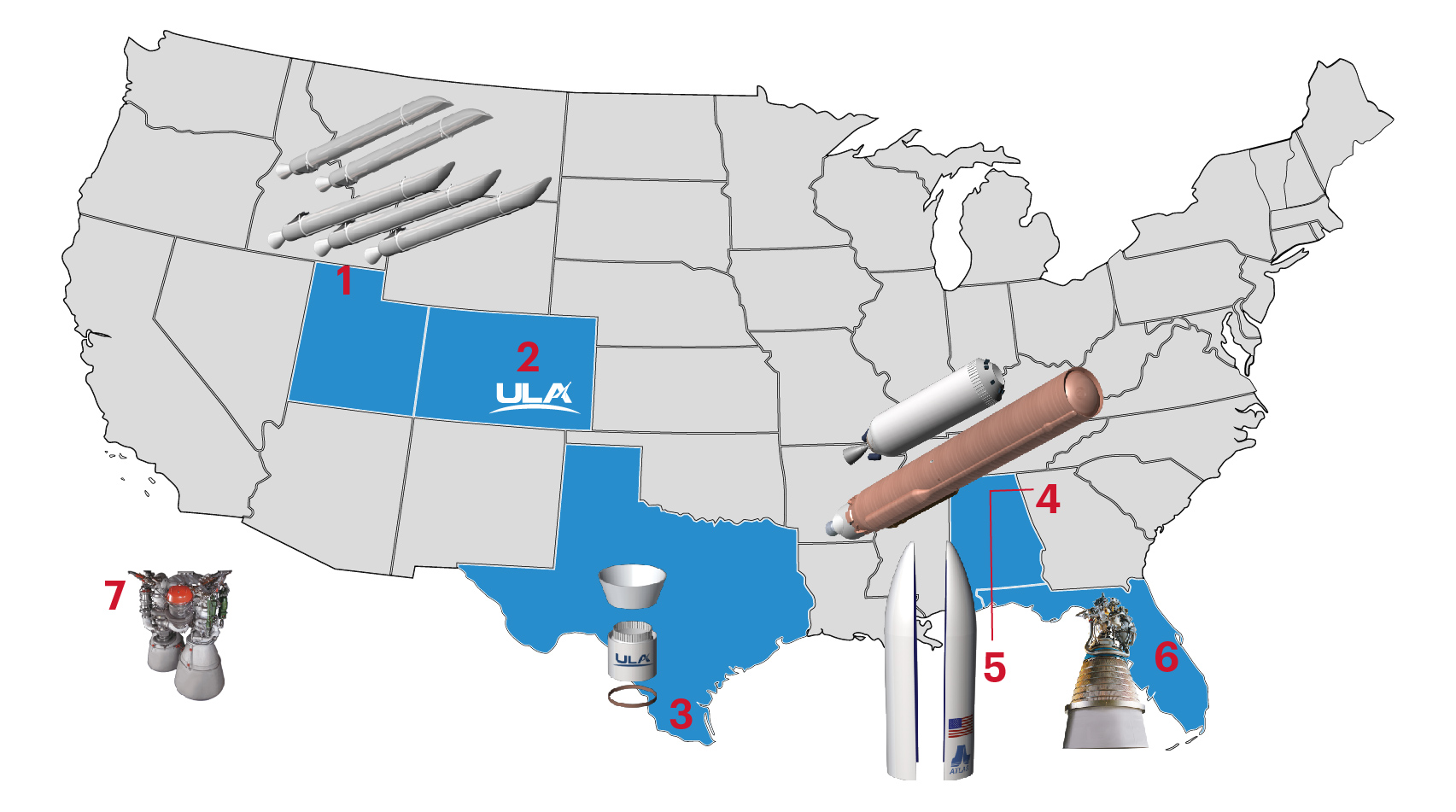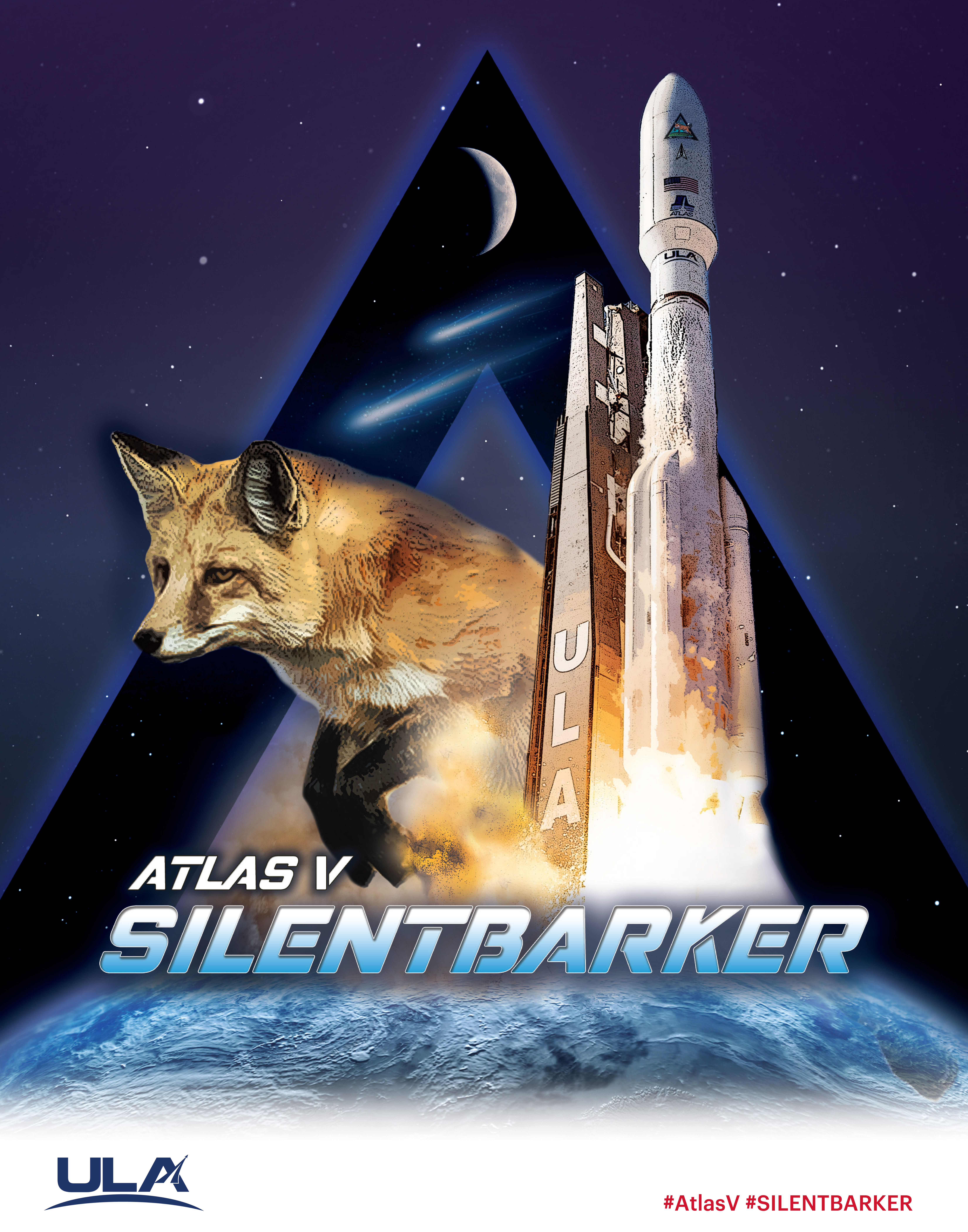ATLAS V SUCCESSFULLY LAUNCHES SILENTBARKER/NROL-107
A United Launch Alliance (ULA) Atlas V rocket carrying the SILENTBARKER/NROL-107 mission for the National Reconnaissance Office (NRO) and the United States Space Force’s Space Systems Command (SSC) lifted off on Sept. 10 at 8:47 a.m. EDT from Space Launch Complex-41 at Cape CanaveralSpace Force Station.
GO Atlas! GO Centaur! GO SILENTBARKER/NROL-107!
Launch HIGHLIGHTS
Live updates
To keep up to speed with updates to the launch countdown, dial the ULA launch hotline at 1-877-852-4321.
Mission Overview
A joint NRO and Space Force Space Domain Awareness (SDA) mission, SILENTBARKER/NROL107 meets the Department of Defense and Intelligence Community (IC) space protection needs by providing the capability to search, detect and track objects from a space-based sensor for timely custody and event detection. Surveillance from space augments and overcomes existing ground sensor limitations with timely 24-hour above-the-weather collection of satellite metric data only possible with a space-based sensor and then communicates its findings to satellite operators, analysts, and other mission users.
The NRO and the USSF have a shared interest to strengthen the nation's SDA and Indication & Warning (I&W) capabilities to enable timely decision making and unity of effort to defend the DoD and IC critical capabilities against current and projected threats. SILENTBARKER/NROL107 will strengthen the NRO's ability to provide a wide range of timely intelligence information to national decision makers, warfighters and intelligence analysts to protect the nation's vital interests and support humanitarian efforts worldwide.
Launch Vehicle
Payload Fairing
The mission is encapsulated in a 17.7-ft (5.4-m) diameter short payload fairing produced in the advanced Out-of-Autoclave manufacturing process. The 5-m PLF is a sandwich composite structure made with a vented aluminum-honeycomb core and graphite-epoxy face sheets. The bisector (two-piece shell) PLF encapsulates both the Centaur and the spacecraft. The vehicle's height with the 5-meter short PLF is approximately 196 ft (59.7 m).
Centaur
The Centaur second stage is 10 ft (3 m) in diameter and 41.5 ft (12.6 m) in length. Its propellant tanks are pressure-stabilized and constructed of corrosion-resistant stainless steel. Centaur is a cryogenic vehicle, fueled with liquid hydrogen and liquid oxygen, powered by an RL10C-1-1 engine producing 23,825 lbs (106 kilo-Newtons) of thrust. The cryogenic tanks are insulated with a combination of helium-purged blankets, radiation shields and spray-on foam insulation (SOFI). The Centaur forward adapter (CFA) provides structural mountings for the fault-tolerant avionics system and structural and electrical interfaces with the spacecraft.
Booster
The booster is 12.5 ft (3.8 m) in diameter and 106.5 ft (32.5 m) in length. The booster’s tanks are structurally rigid and constructed of isogrid aluminum barrels, spun-formed aluminum domes and intertank skirts. Booster propulsion is provided by the RD-180 engine system (a single engine with two thrust chambers). The RD-180 burns RP-1 (Rocket Propellant-1 or highly purified kerosene) and liquid oxygen and delivers 860,200 lbs (3.83 mega-Newtons) of thrust at sea level. Five solid rocket boosters (SRBs) generate the additional power required at liftoff, with each providing 371,550 lbs (1.6 mega-Newtons) of thrust. The Centaur avionics system, provides guidance, flight control and vehicle sequencing functions during the booster and Centaur phases of flight.

Flight Profile
![SILENTBARKER_FlightProfile_ExternalWebsite[67] SILENTBARKER_FlightProfile_ExternalWebsite[67]](/images/default-source/default-album/silentbarker_flightprofile_externalwebsite-67.jpg?sfvrsn=f00ae6b6_1)
Space Launch Complex // Processing
Space Launch Complex-41, the East Coast home of the Atlas V rocket at Cape Canaveral Space Force Station in Florida, employs a “clean pad” concept of operations to ready launch vehicles and payloads for ascent into space. The rocket elements are assembled atop a Mobile Launch Platform inside the Vertical Integration Facility (VIF) located adjacent to the launch pad. The platform and fully stacked Atlas V then travel by rail approximately 1,800 feet northward from the VIF to the pad for the final countdown, fueling and liftoff. Complex 41 was constructed by the U.S. Air Force in the 1960s for the Titan rocket program. The site was rejuvenated in support of the Atlas V starting in the late 1990s.

1. Advanced Spaceflight Operations Center (ASOC)
Launch Control Center
Mission Director’s Center,
Mission Support Teams,
Launch Vehicle Horizontal Processing &
Ordnance Installation
2. Delta Operations Center (DOC)
Offline Vertical Integration (OVI):
Interstage Adapters, Centaur,
Boattail, Base Module & Centaur
Forward Load Reactor Deck
3. Spaceflight Processing Facility
Spacecraft Processing,
Testing & Encapsulation
4. Vertical Integration Facility
Launch Vehicle Integration &
Testing, Spacecraft Mate &
Integrated Operations
Production

1. Promontory, UT
Solid Rocket Booster Fabrication
at Northrop Grumman
2. Denver, CO
ULA Headquarters &
Design Center Engineering
3. Harlingen, TX
Payload Adapter,
Booster Adapter &
Centaur Adapter Fabrication
4. Decatur, AL
Booster Fabrication & Final Assembly,
Centaur Tank Fabrication & Final Assembly
5. Decatur, AL
5-m Payload Fairing
Fabrication at Beyond Gravity
6. West Palm Beach, FL
RL10C-1-1 Engine Fabrication at
Aerojet Rocketdyne
7. Khimki, Russia
RD-180 Engine Fabrication at NPO Energomash


